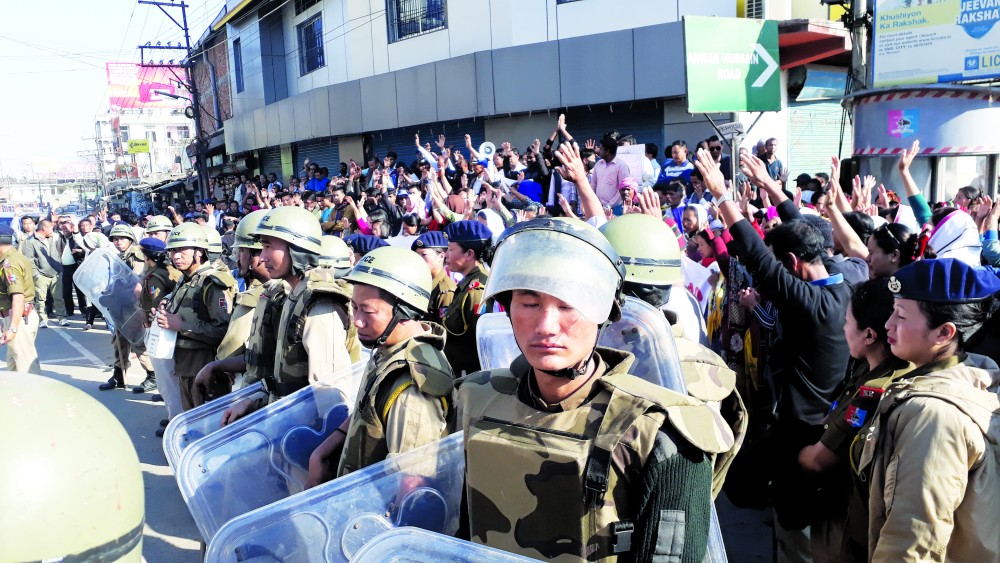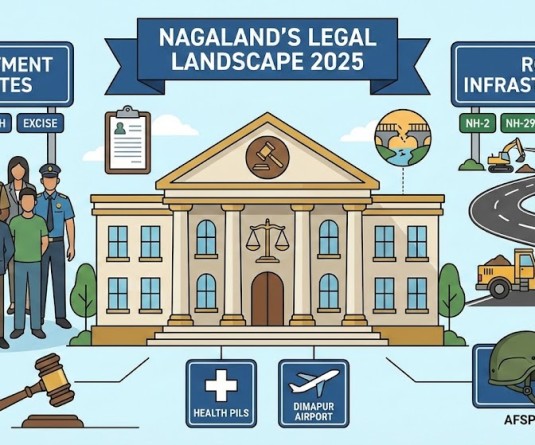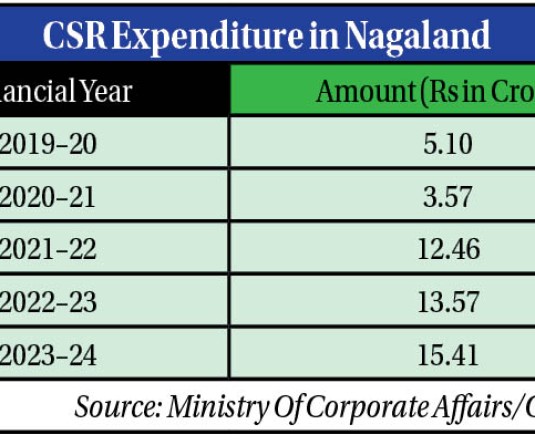Protestors at an anti-corruption rally organized by ACAUT in connection to a PDS scam are seen surrounded by police in full riot gear at Kher Mahal police point, Dimapur on December 15 (File photo)

Teachers in Nagaland endured the worst over nonpayment of salaries
Morung Express News
Dimapur | December 30
While widespread protests and ultimatums to Nagaland Government over non-fulfillment of its duties and responsibilities have become a perennial problem in Nagaland in recent times, the year 2016 stands out for the ominous and unprecedented mechanism the State Government applied to gag democratic protest and dissent.
The use of water cannon and tear-gas as well as the imposition of Sec. 144 CrPc to quell any forms of dissent has made many to consider 2016 as a ‘Year of Water Canonisation’ instead of the officially declared slogan, ‘Year of Construction.’
Not surprisingly, just like last year, 2016 will be remembered as a year of agitation against the Nagaland State government for nonpayment of salaries and those in the teaching profession, deemed “The best and brightest people in the society” by the Chief Minister TR Zeliang in his glorious homage on Teachers Day suffered the most.
Cycle of protests over unpaid salaries
The whole year round, different teachers’ association wasted priceless time and energy either protesting over unpaid salaries or other grievances as a result of government’s apathy.
On February 16, the Hindi teachers launched their first phase of agitation by boycotting classes in protest against non-payment of their salary for more than six months. The teachers renewed their demand on April when the All Nagaland Aggrieved Hindi Teachers Association (ANAHTA) demanded “all our pending salary” up to March 2016.
In April, after an intervention from the education minister, 111 RMSA phase 2 & 3 aggrieved candidates called off their indefinite protest demanding their appointment order- only to resume the next month after the authority failed to fulfill the assurance.
In May (24 -26) a total of 21,000 teachers in Nagaland went on three-day mass casual leave in protest against the State Government’s failure to bifurcate Secondary/ Elementary Education from Higher Secondary in the Department of School Education.
The agitation affected 2069 government schools across Nagaland state. While the state government tried to placate various agitating entities with temporary respite, the issues continue to surface in a regular cycle.
Consequently, in August, the All Nagaland Hindi Teachers Union (ANHTU) appealed for releasing salaries for 1379 Hindi Teachers appointed under Centrally Sponsored Schemes (CSS). They have not been paid their salaries since February 2016.
During the same month, unpaid and aggrieved teachers, under the umbrella of Nagaland RMSA Teachers’ Association 2013 (NRMSA-2013) launched their agitation (August 21) by boycotting classes in their respective schools, affecting at least 49 government schools in the state. It continued till September.
On October 17, the Nagaland SSA Teachers Association (NSSATA) began their Phase-I agitation of boycotting classes after the concerned department failed to fulfilled its charter of demand submitted on October 5 which include payment of pending salaries.
If non-payment of salaries for six month was more than unjust, on November 1, 2600 SSA teachers from all the 11 districts converged at the Directorate of School Education, Kohima to protest against non-fulfillment of their four-point charter of demands only to be greeted with water cannons and tear gas under the directive of the government.
With the State Government playing delay tactics with short lived assurances, it is anticipated that the coming 2017 would encounter more agitations and demonstrations.
Water “Canonisation” and force – A dangerous trend
Alarmingly, amidst the widespread neglect, the standard response from a “neurotic government” has been to resort to unprecedented and undemocratic action as witnessed during the teacher’s agitation as well as other protest.
With intimidation and reprisal as a form of standard operating procedure, there were further two instances when the response from the government was outright arbitrary.
When a bandh on NH-29 was called by Co-ordination Committee on Fuel Adulteration (CCoFA) on October 17 in connection to the busting of a “fuel adulteration” racket in Dimapur on June 27, it was declared “illegal” by State Cabinet even as Police used force to disperse peaceful volunteers.
The government also promulgated Sec. 144 CrPc (curfew) along the highway to quell any resistance.
On December 15, when ACAUT members and activists convened a public rally to demand impartial enquiry into a ‘PDS scam,’ an order issued by the Commissioner of Police, Dimapur restricted their movement.
But even after relocating to another area, the protestors restrained by the police to stage the rally there. Eventually the police used water cannons and tear gas to disperse the peaceful protestors. There were even allegations of lathicharge from the police.
These events, particularly the inglorious ‘baptism’ of unpaid teachers in Kohima in November and use of tear gas and water cannon against peaceful anti-corruption rally, is taking the State into an unprecedented terrain in governance and polity where the edifice of democracy lies doused and trampled – metaphorically and literally.






